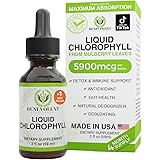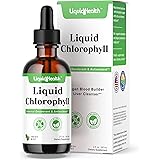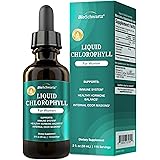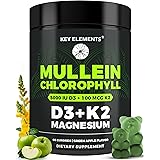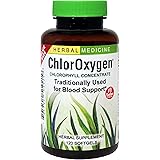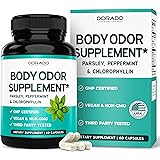As insightfully explained in the video above, undergoing alcohol detox is widely considered to be the most challenging and potentially life-threatening initial step in addressing alcohol dependence. In fact, it is estimated that approximately 1 in 10 adults in the United States experiences alcohol use disorder (AUD), and for many, the fear of withdrawal symptoms prevents them from seeking help. This fear is not unfounded; the body’s reaction to the sudden absence of alcohol can be severe and demands careful management. This article will delve deeper into the multifaceted experience of alcohol withdrawal, detailing the symptoms, timeline, and crucial importance of medical guidance during this critical phase of recovery.
Understanding Alcohol Withdrawal Symptoms
When chronic heavy drinking is stopped, the brain and body, which have adapted to the constant presence of alcohol, react adversely. This reaction manifests as a range of physical and psychological symptoms known as alcohol withdrawal syndrome. It is important to recognize these signs, as their severity often necessitates professional intervention.
Common Physical Manifestations of Alcohol Withdrawal
A variety of physical symptoms are typically experienced during the initial stages of alcohol detox. These can often be debilitating and contribute significantly to discomfort. Tremors, for example, are frequently observed; these involuntary shakings of the hands, arms, or even the entire body are a hallmark sign of withdrawal. They are generally caused by an overactive nervous system trying to rebalance itself.
Rapid heart rate, also known as tachycardia, is another common symptom. The heart races as the body’s sympathetic nervous system goes into overdrive. In addition, nausea and vomiting are often reported, which can lead to dehydration and further complicate the detox process. These gastrointestinal issues are a direct result of the body’s overall systemic distress.
Psychological and Emotional Impacts
Beyond the physical, the psychological and emotional toll of alcohol withdrawal is significant. Irritability is a widespread symptom, where individuals may find themselves easily agitated or prone to anger. This heightened emotional state is often accompanied by significant anxiety, a pervasive sense of unease or dread that can be overwhelming. Furthermore, insomnia is a frequent challenge, making it difficult for individuals to achieve restful sleep, which further exacerbates other symptoms and can prolong discomfort.
The Timeline of Alcohol Detox: When Symptoms Emerge and Peak
The progression of alcohol withdrawal symptoms generally follows a predictable timeline, although individual experiences can vary based on factors such as the duration and severity of alcohol use, overall health, and genetic predispositions. As mentioned in the video, symptoms typically commence anywhere from two hours to two days after the last drink was consumed.
Early Onset Symptoms (6-12 Hours)
Within the first 6 to 12 hours, minor symptoms usually begin to appear. These might include headaches, stomach upset, loss of appetite, and light tremors. Insomnia and mild anxiety are also commonly experienced during this initial window. These early signs are often the first indication that the body is beginning to react to the absence of alcohol.
Peak Withdrawal (12-48 Hours)
The intensity of symptoms generally escalates within the 12 to 48-hour mark. This period is often characterized by increased tremors, more pronounced anxiety, and elevated heart rate and blood pressure. Nausea and vomiting may become more severe, and profuse sweating is often observed. For some individuals, this stage can also involve hallucinations, which are typically visual, auditory, or tactile disturbances that are not based in reality. For example, a person might see patterns or hear voices that are not present.
Severe Withdrawal: The Risk of Delirium Tremens and Seizures (48-72+ Hours)
The most severe and life-threatening symptoms, including seizures and Delirium Tremens (DTs), are most likely to occur between 48 and 72 hours after cessation, though they can manifest up to a week later. DTs are a severe form of alcohol withdrawal involving sudden and severe mental or nervous system changes. Symptoms of DTs can include profound confusion, rapid changes in mood, extreme agitation, and a fever. These severe manifestations are a clear indication of the urgent need for medical intervention. If left untreated, DTs can be fatal, with mortality rates estimated at up to 15% in some cases, primarily due to cardiovascular collapse or respiratory failure.
Why Medical Guidance is Non-Negotiable for Alcohol Detox
Given the potentially severe and life-threatening nature of alcohol withdrawal, medical supervision is not merely recommended; it is essential. Attempting alcohol detox without professional medical care can lead to serious health complications and, in worst-case scenarios, death. A medically supervised detox environment ensures safety, comfort, and the highest chance of successful completion.
Ensuring Safety Through Professional Monitoring
During a medical detox, individuals are continuously monitored by healthcare professionals. This vigilant oversight allows for the immediate identification and management of any emergent complications, such as escalating blood pressure or the onset of seizures. Vital signs are regularly checked, and physical and psychological well-being are assessed to ensure stability. This level of monitoring cannot be achieved safely in an unsupervised home environment.
Pharmacological Support to Alleviate Symptoms
One of the primary benefits of medical detox is the availability of medications to manage withdrawal symptoms. Benzodiazepines, such as Valium or Ativan, are commonly prescribed to reduce anxiety, prevent seizures, and stabilize vital signs. These medications work by calming the overactive nervous system that is characteristic of alcohol withdrawal. Other medications may also be used to address specific symptoms like nausea or sleep disturbances. The careful administration and dosage adjustment of these medications are critical and can only be performed by medical personnel.
Creating a Supportive and Therapeutic Environment
Beyond the medical aspects, a professional detox facility provides a structured and supportive environment. Patients are protected from external triggers and stressors that might impede their recovery. They also receive emotional support and encouragement from staff, which is crucial during such a vulnerable period. This supportive atmosphere helps individuals focus solely on their physical recovery and prepare for the next steps in their long-term sobriety journey.
The Medical Detox Process: A Closer Look
For those considering alcohol detox, understanding what a typical medical detox process entails can help alleviate fears and set realistic expectations. This process is generally designed to safely clear the body of alcohol and manage withdrawal symptoms in a controlled environment.
Initial Assessment and Stabilization
Upon admission to a detox facility, a comprehensive medical assessment is conducted. This includes a review of the individual’s medical history, substance use patterns, and a physical examination. This information helps the medical team create a personalized detox plan. During this initial phase, the focus is on stabilizing the patient, which may involve administering immediate medication to manage severe symptoms or prevent complications.
Medication Management and Symptom Control
Throughout the detox period, medications are systematically administered and adjusted based on the individual’s response. The goal is to gradually reduce the medication as withdrawal symptoms subside, ensuring a smooth transition off pharmacological support. Nutritional support and hydration are also critical components, as many individuals entering detox are malnourished and dehydrated. Intravenous fluids and vitamins may be provided to restore the body’s balance.
Preparation for Ongoing Treatment
Detoxification is merely the first step in the recovery process; it addresses the physical dependence but not the underlying causes of addiction. As physical symptoms begin to resolve, discussions are initiated regarding post-detox treatment options, such as inpatient rehabilitation, outpatient programs, or participation in support groups. A successful alcohol detox culminates in a clear plan for continued care, helping to establish a foundation for long-term sobriety and wellness.
Demystifying Alcohol Detox: Your Questions Answered
What is alcohol detox?
Alcohol detox is the first and most challenging step in overcoming alcohol dependence. It involves your body reacting to the sudden absence of alcohol after heavy drinking.
What are some common physical symptoms of alcohol withdrawal?
Common physical symptoms during alcohol withdrawal include tremors (shaking), a rapid heart rate, nausea, and vomiting. These are signs your body is reacting to the absence of alcohol.
When do alcohol withdrawal symptoms usually start?
Alcohol withdrawal symptoms typically begin anywhere from 6 to 12 hours after your last drink. More severe symptoms can emerge and peak between 12 and 72 hours.
Why is medical guidance important for alcohol detox?
Medical guidance is crucial because alcohol withdrawal can be life-threatening, with risks like seizures and Delirium Tremens. Professionals can monitor you and provide medication to ensure your safety.





